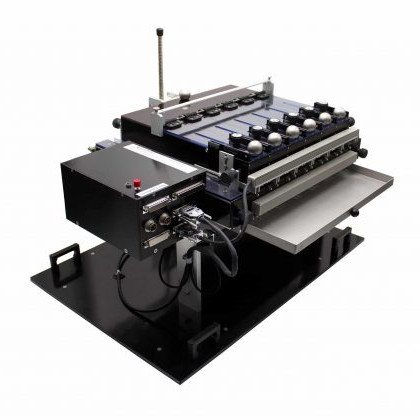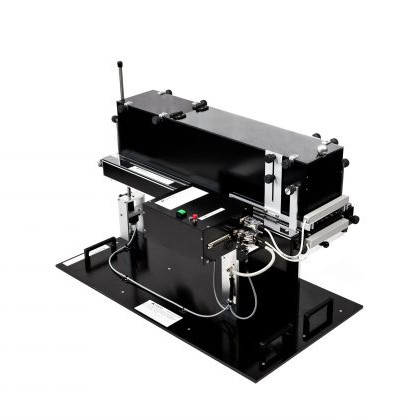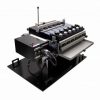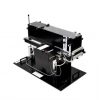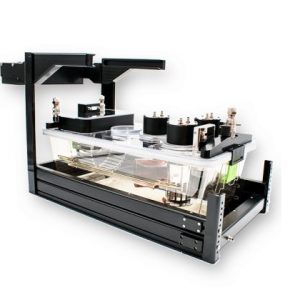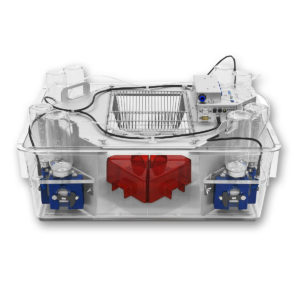Product Enquiry
If you would like to send us an enquiry about this product, please click the button below, fill in the form and submit.
Product EnquiryTreadmill
Exercise, Motor Function & Coordination
The TSE Treadmill Systems are computerized electronically-controlled devices designed for forced exercise experiments and testing of fatigue in rats and mice. Animals can exercise over long periods of time to study chronic adaptation to exercise or mechanisms that reverse disease progression.
Treadmills for mice are available for 1 up to 6 animals, rat treadmills for up to 4 animals. Rat treadmills can also be used for mice with an optional mouse set comprising special lane inserts and exchange shock grids. Several treadmills can be combined with each other if more measuring places are required.
All treadmills feature an adjustable inclination (software-controlled adjustment on request) for modification of workload. The treadmill belt is driven by a servo-motor controlled by the Treadmill software that allows programming of user-defined speed profiles as a combination of constant speed and acceleration/deceleration phases with adjustable duration (the available speed range depends on the treadmill model). If the animal leaves the belt, this is registered by adjustable infrared sensors. Foot shock or air puff can be added to motivate the animal to stay on the belt.
Time to exhaustion is stored in data files generated for further statistical evaluation.
The Treadmill System is available in a calorimetric configuration (CaloTreadmill) for exercise calorimetry in combination with the TSE PhenoMaster CaloSys module.
Features
- 1, 2, 4, and 6 lane models for mice
- 1, 2 or 4 lane models for rats
- Software-programmable speed profiles
- Adjustable inclination: -20 up to +25 degrees
- Individual trial start for each lane
- Light beam sensors detect when animal leaves the belt
- Optional foot shock or air puff module
Application
- Motor Function
- Motor Performance
- Endurance
Disease models
- Parkinson´s
- Stroke
Brochure
Selected Publications
Abbasian S, Asghar Ravasi A. The effect of antecedent-conditioning high-intensity interval training on BDNF regulation through PGC-1α pathway following cerebral ischemia. Brain Res 2020; 1729: 146618.
Cui D, Mesaros A, Burdeos G, Voigt I, Giavalisco P, Hinze Y, Purrio M, Neumaier B, Drzezga A, Obata Y, Endepols H, Xu X. Dnmt3a2/Dnmt3L Overexpression in the Dopaminergic System of Mice Increases Exercise Behavior through Signaling Changes in the Hypothalamus. Int J Mol Sci 2020; 21(17): 6297
Nicolaisen TS, Klein AB, Dmytriyeva O, Lund J, Ingerslev LR, Fritzen AM, Carl CS, Lundsgaard AM, Frost M, Ma T, Schjerling P, Gerhart-Hines Z, Flamant F, Gauthier K, Larsen S, Richter EA, Kiens B, Clemmensen C. Thyroid hormone receptor α in skeletal muscle is essential for T3-mediated increase in energy expenditure. FASEB J 2020; 34(11): 15480-91
Raun SH, Henriquez-Olguín C, Karavaeva I, Ali M, Møller LLV, Kot W, Castro-Mejía JL, Nielsen DS, Gerhart-Hines Z, Richter EA, Sylow L. Housing temperature influences exercise training adaptations in mice. Nat Commun 2020; 11(1): 1560
Reynolds JC, Lee C. Mouse Fitness as Determined Through Treadmill Running and Walking. Methods Mol Biol 2020; 2144: 57-65
Selected Product Citations
Fibroblast Growth Factor 21 as a Potential Biomarker for Improved Locomotion and Olfaction Detection Ability after Weight Reduction in Obese Mice |
|
| Nicole Power Guerra, Alisha Parveen, …, Angela Kuhla | Nutrients | Published 24 Aug 2021 |
| Article Snippet The first group (n = 15) remained on HFD, hereinafter referred to as “HFD/HFD”.. The second group additionally participated in TM exercise (TSE System, Treadmill 303401; n = 15), referred to as “HFD/HFD + TM”.. The third group was also trained on treadmills and additionally received a time restriction on food (TRF) intake after the first three months of the intervention (n = 15), designated as the group “HFD/HFD + TM + TRF”. |
|
Voluntary wheel running complements microdystrophin gene therapy to improve muscle function in mdx mice |
|
| Shelby E. Hamm Hamm, Daniel D.Fathalikhani, Adele K. Addington | Mol Ther Methods Clin De | Published 3 Mar 2021 |
| Article Snippet Baseline and final treadmill fatigue testsAll mice were acclimated to a mouse treadmill (TSE Systems, Chesterfield, MO, USA) for 3 days before the study began (baseline test) and again shortly before sacrifice (final test).. On the fourth day, the mice were run to exhaustion and total run time and distance recorded. |
|
A maladaptive ER stress response triggers dysfunction in highly active muscles of mice with SELENON loss |
|
| Diego Pozzer, Ersilia Varone, …, Ester Zito | Redox Biol | Published 26 Oct 2018 |
| Article Snippet 4.8 TreadmillFor acute exercise studies we strictly followed the protocol in .. Briefly, mice were trained on an open treadmill (TSE-Systems) for two days.. The third day mice started to run at a speed of 10 m/min for forty minutes, then the speed was increased of 1 m/min every 10 min for a total of 30 min and finally the speed was increased by 1 m/min every five minutes until the mice were exhausted. |
|

